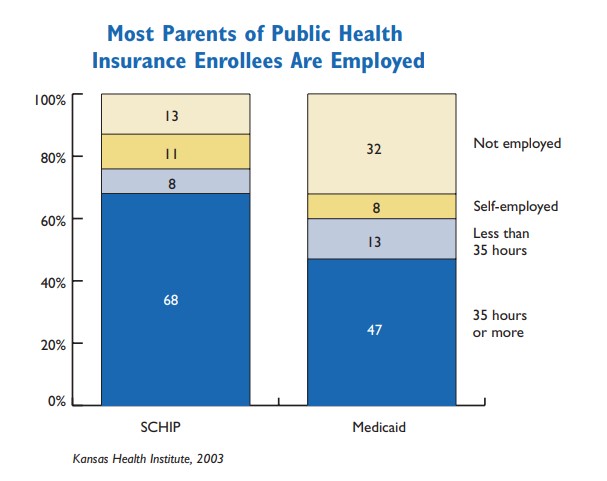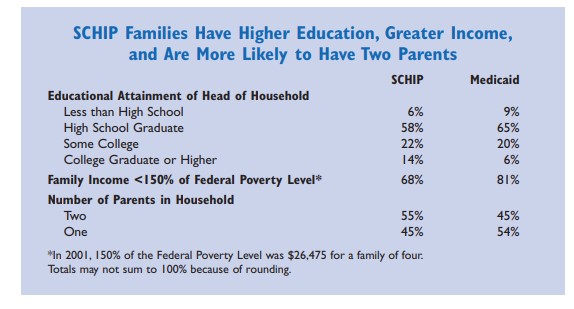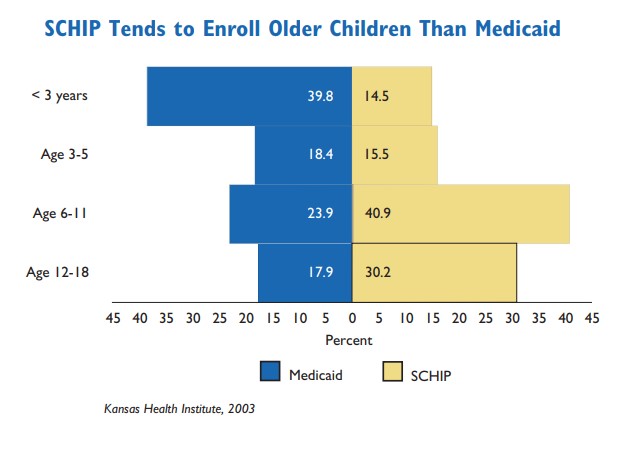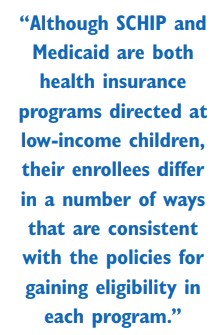Key Points
This report describes characteristics of children entering SCHIP and Medicaid, as well as characteristics of their families.
-
- SCHIP was designed to provide insurance coverage to children in low-income, working families earning too much to qualify for Medicaid, but unable to afford private insurance.
- Consistent with this intent, 87 percent of enrollees in SCHIP had at least one employed parent. Medicaid enrollees’ parents were less likely to be employed; nevertheless, two-thirds (68 percent) of Medicaid children had at least one working parent.
- SCHIP enrollees lived in households whose head attained higher educational levels; they also were more likely than children in Medicaid to have family incomes above the federal poverty level.
- Because Medicaid allows younger children to qualify for coverage with higher family incomes, it tended to enroll more young children. SCHIP enrolled larger proportions of older children and adolescents.
- Demographic measures show SCHIP serves children of low-income, working families, consistent with the design of the program. Medicaid serves a younger population with greater economic needs.




